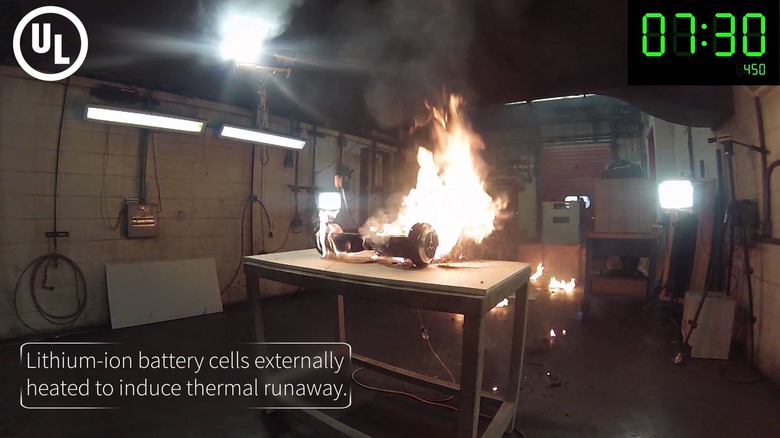Watch A Hoverboard Spontaneously Combust And Start Shooting Fire Everywhere
Hoverboards were some of the hottest gifts of the holiday season, but not just because every kid in the world wanted one. I'm talking about the fact that they overheat and explode, of course, which quickly became one of the most fascinating and alarming controversies of 2015. Unfortunately, the issue hasn't been solved in 2016.
READ MORE: All the best apps on my iPhone are made by Google and Microsoft
In a recent post on the UL Firefighter Safety website, UL's Research Team demonstrates exactly what happens when a lithium-ion battery in a hoverboard goes into thermal runaway, resulting in a rapid increases in temperature that can have catastrophic consequences. You can see the results of the demonstration in this video:
An incredible video, yes, but not something you'd want to replicate in your living room.
Although UL has yet to certify a single self-balancing scooter (hoverboard) for safety, the company has developed requirements that will allow it to do so effectively in the future. In the meantime, here are some steps hoverboard owners should be following:
- Keep the hoverboard away from flammable materials while charging.
- Do not overcharge the board. Follow the manufacturer's recommend charging times.
- Do not charge the hoverboard overnight.
- Use only the charger that is packaged with the hoverboard.
- If an incident does occur, it may be incorrect to use a fire extinguisher due to the nature of battery chemical fires. Instead, leave the area and call 911.
Finally, here's Jeff Smidt, vice president and general manager for UL's Energy and Power Technologies division, on the new evaluation methods:
"UL has been evaluating, testing, and certifying battery cells, modules, and packs as well as related battery chargers and power supplies as individual components for many years. With UL 2272, our expert science, research, and engineering teams have now developed the appropriate requirements and methodology to confidently evaluate and test the entire self-balancing scooter for electrical and fire-hazard safety as a system. As recent news has shown us, there is a strong need for this type of service, and today we are pleased to offer our testing and certification services to manufacturers and distributors."
